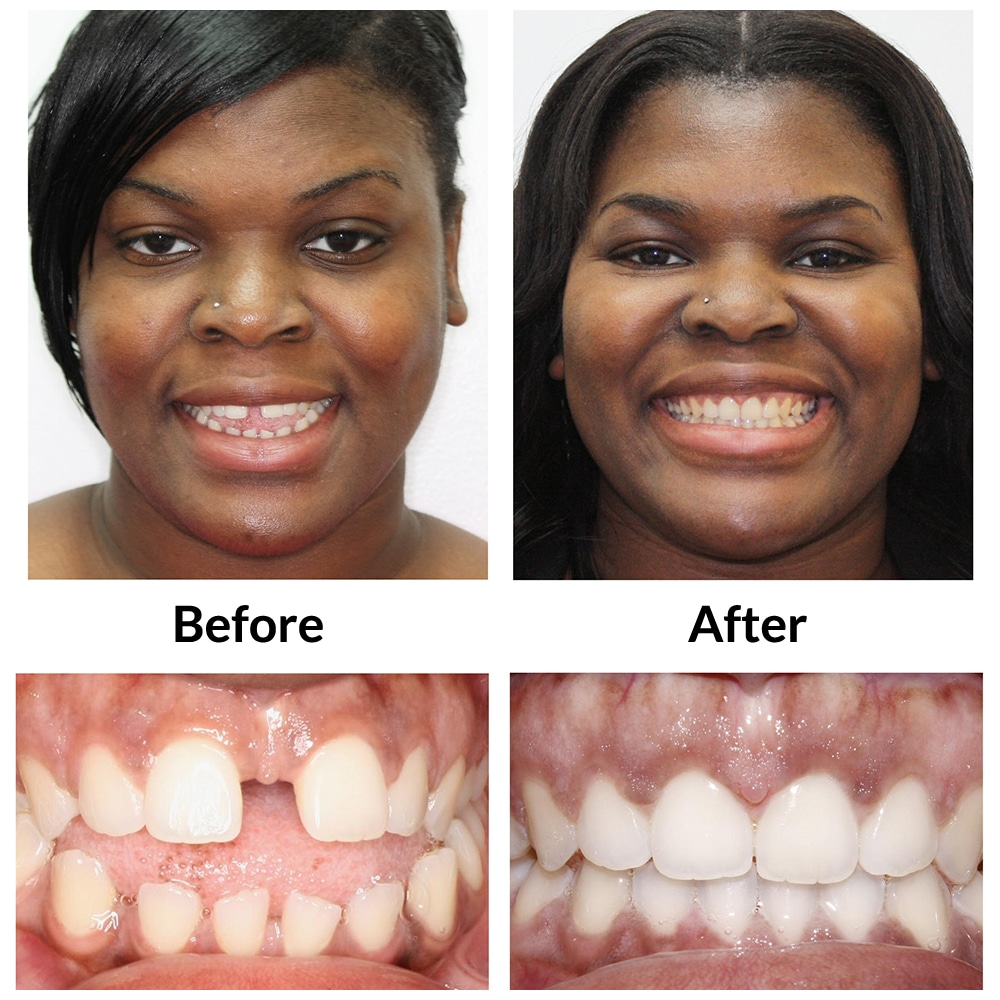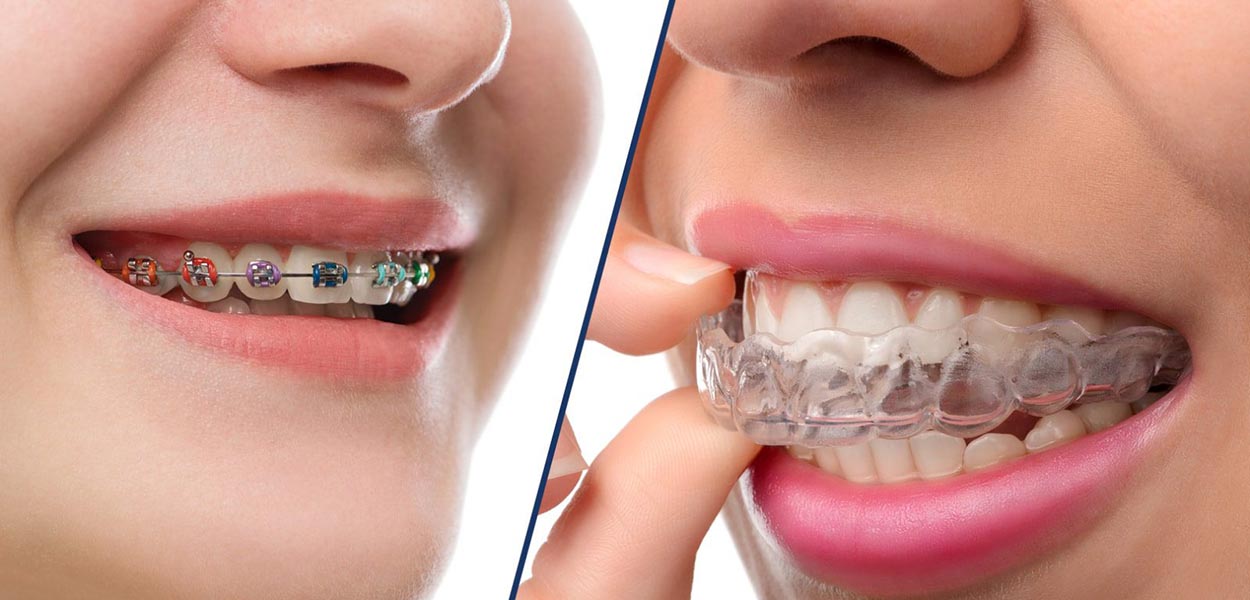Preserving Oral Health While Utilizing Invisalign: Tips for a Smooth Experience
Wiki Article
Invisalign vs. Conventional Braces: Which Option Is Right for You?
When taking into consideration orthodontic therapy, the option between Invisalign and traditional braces offers numerous crucial elements that merit mindful examination. Invisalign uses a discreet alternative with detachable aligners, while traditional braces offer a more noticeable yet reliable remedy for serious misalignment.Overview of Treatment Alternatives

In contrast, conventional braces consist of steel brackets and cables that are bonded to the teeth. This technique uses constant pressure gradually to accomplish positioning. While reliable for complicated orthodontic problems, conventional dental braces require normal sees for changes and can present obstacles in preserving oral hygiene due to the problem of cleaning about braces and cords.
Both options have their advantages, and the option usually depends upon particular oral problems, way of living choices, and individual conformity. Inevitably, getting in touch with an orthodontic expert is crucial for figuring out the most appropriate therapy strategy tailored to individual requirements. Understanding the subtleties of each option can considerably affect the total success of orthodontic therapy.
Aesthetic Considerations
A substantial aspect influencing the selection in between Invisalign and conventional dental braces is the aesthetic appeal each treatment uses. Invisalign aligners are crafted from clear plastic, making them basically unseen when put on. This very discreet look is especially attracting grownups and teenagers who might really feel uneasy concerning their orthodontic treatment. The capacity to keep a natural smile throughout the placement procedure can significantly enhance the person's self-confidence in expert and social setups.On the other hand, standard braces include steel brackets and wires, which can be a lot more recognizable. While advancements in orthodontic innovation have actually brought about the advancement of smaller sized braces and colored elastics, typical braces still keep a more conspicuous account. For some people, the presence of braces may prevent them from seeking needed therapy.
Inevitably, the choice in between Invisalign and traditional dental braces may pivot on individual choices concerning visual appeals. Patients who focus on discernment frequently lean toward Invisalign, while those that are much less worried about presence may select typical braces. Understanding the aesthetic implications of each option is essential for making a notified choice that lines up with one's lifestyle and preferences.
Convenience and Convenience

In terms of convenience, Invisalign aligners are detachable, enabling patients to appreciate their favored foods without constraint and keep optimum dental health. Cleaning and flossing are simplified, as the top article aligners can be taken out during these regimens, whereas traditional dental braces need careful steering around wires and brackets.
Additionally, Invisalign's dynamic system permits less orthodontic gos to. People normally get multiple collections of aligners simultaneously, which can enhance the treatment procedure and decrease time spent in the orthodontist's chair. On the other hand, traditional dental braces require regular changes, making them much less hassle-free for those with hectic timetables. Invisalign. Overall, the comfort and ease of Invisalign make it an attractive option for lots of people seeking orthodontic treatment.
Therapy Period and Performance
While both Invisalign and conventional dental braces are efficient in dealing with oral misalignments, the period of treatment can differ dramatically in between both choices. Typically, Invisalign therapy can take anywhere from 12 to 18 months, depending upon the complexity of the instance. The clear aligners work by progressively moving teeth right into their desired placements, and regular follow-ups with an orthodontist aid make sure progression remains on track.
On the other hand, standard braces commonly require a longer commitment, usually varying from 18 months to three years. This look at here now is due to their fixed nature and making use of wires and braces, which can be a lot more reliable for intricate instances and severe imbalances (Invisalign). The therapy efficiency of typical dental braces is well-documented, as they enable accurate adjustments and higher control over tooth movement
Inevitably, the choice between Invisalign and traditional braces might depend upon both the anticipated therapy duration and the particular dental concerns at hand. Consulting with an orthodontist is crucial, as they can give tailored referrals based upon individual requirements, guaranteeing the selected approach lines up with desired end results and durations.
Price Comparison and Insurance Policy Alternatives
Expense plays a significant function in the decision-making procedure for people considering orthodontic therapy, whether opting for Invisalign or typical dental braces. On average, the expense of Invisalign ranges from $3,000 to $8,000, while standard dental braces commonly set you back between $2,000 and $6,000. Aspects influencing these prices consist of the complexity of the instance, the period of therapy, and geographical location.Insurance insurance coverage can substantially impact out-of-pocket expenditures. Several dental insurance policy plans give partial insurance coverage for orthodontic therapies, but the specifics can vary widely. It is critical for individuals to evaluate their insurance coverage plans to identify the extent of protection for either option. Typically, traditional braces may be more often covered by insurance policy plans contrasted to Invisalign, which some insurance companies classify as a cosmetic treatment.
Furthermore, several orthodontic techniques supply flexible repayment strategies, making both treatment choices much more available. People must ask about potential funding options and price cuts for upfront payments. Examining the overall expense, including insurance policy benefits and layaway plan, is important for making an educated choice that straightens with both visual preferences and budget plan considerations.

Verdict
In recap, the option in between Invisalign and traditional dental braces depends upon multiple elements, consisting of aesthetic choices, convenience, therapy duration, and expense. Invisalign provides a very discreet, removable option that facilitates dental health and dietary versatility, while traditional braces may be a lot more visit their website ideal for complicated oral concerns and typically come at a lower rate factor. Inevitably, appointment with an orthodontist is vital to examine private conditions and figure out the most ideal therapy alternative for accomplishing optimum dental alignment.When taking into consideration orthodontic treatment, the selection between Invisalign and standard braces offers numerous essential elements that warrant cautious evaluation.Contrasting Invisalign and typical dental braces exposes distinct treatment choices for orthodontic correction.While both Invisalign and standard braces are effective in remedying dental misalignments, the period of therapy can vary considerably between the two alternatives.Expense plays a considerable function in the decision-making procedure for people taking into consideration orthodontic therapy, whether choosing for Invisalign or standard dental braces.In recap, the option in between Invisalign and conventional braces pivots on multiple elements, including visual choices, comfort, therapy duration, and price.
Report this wiki page